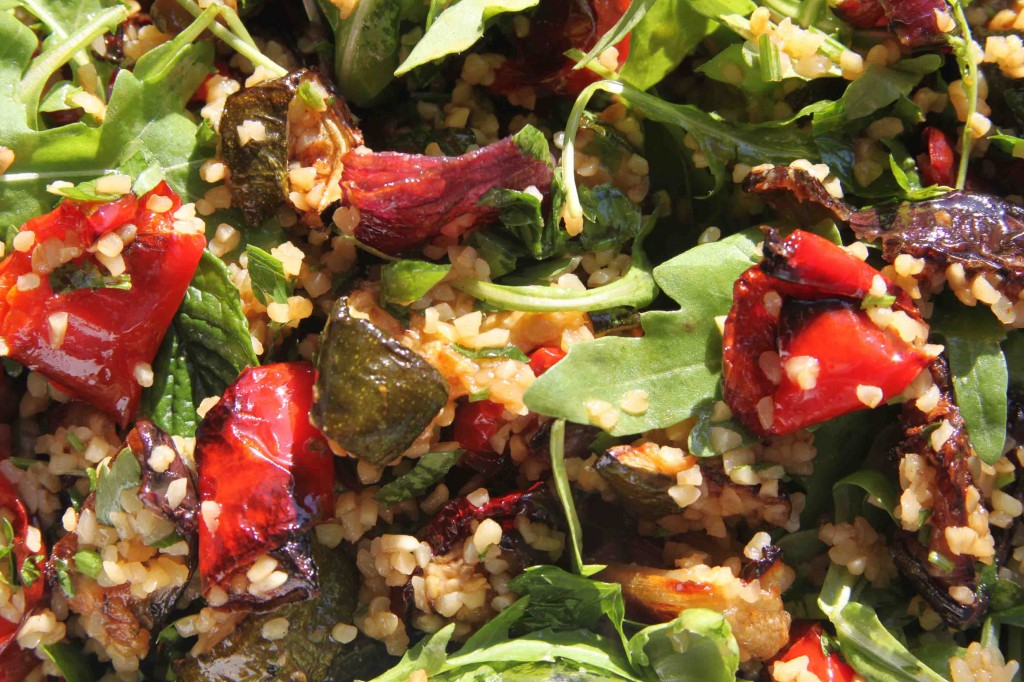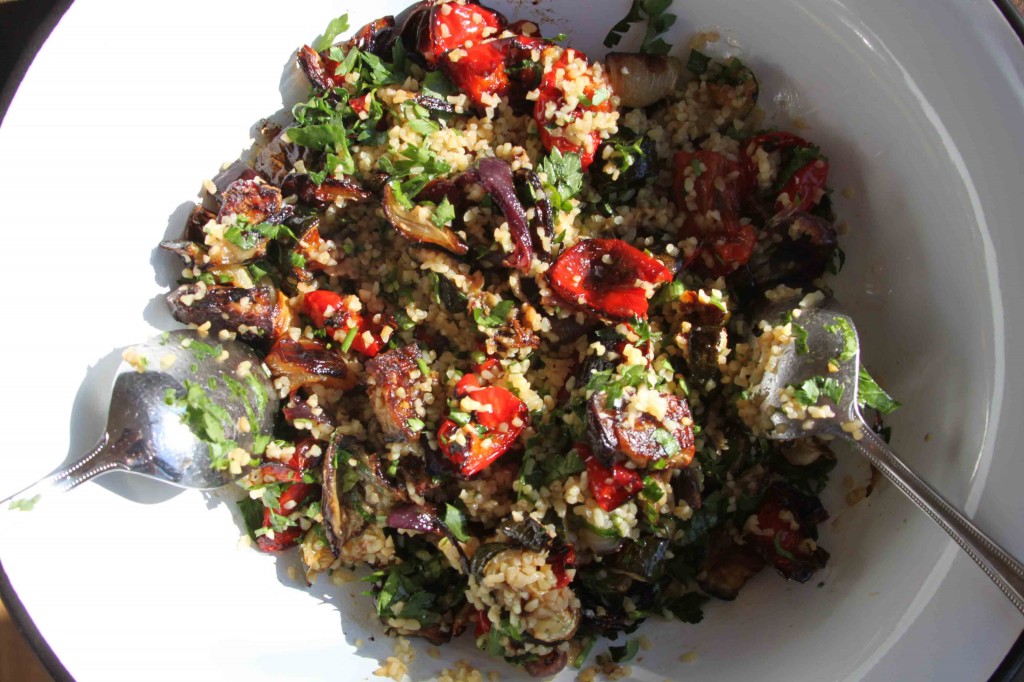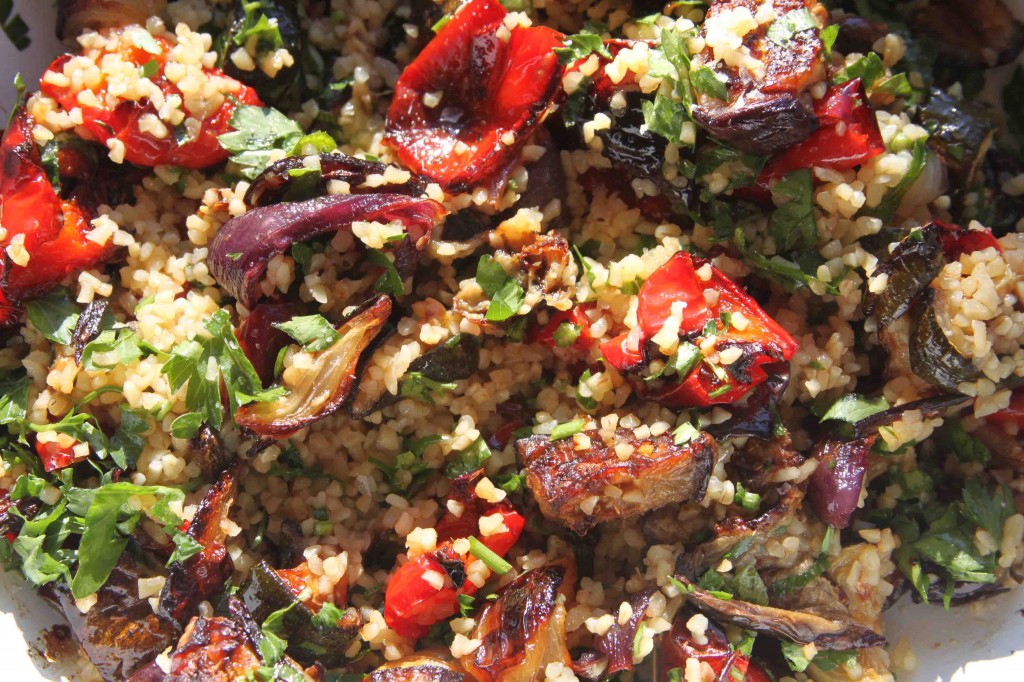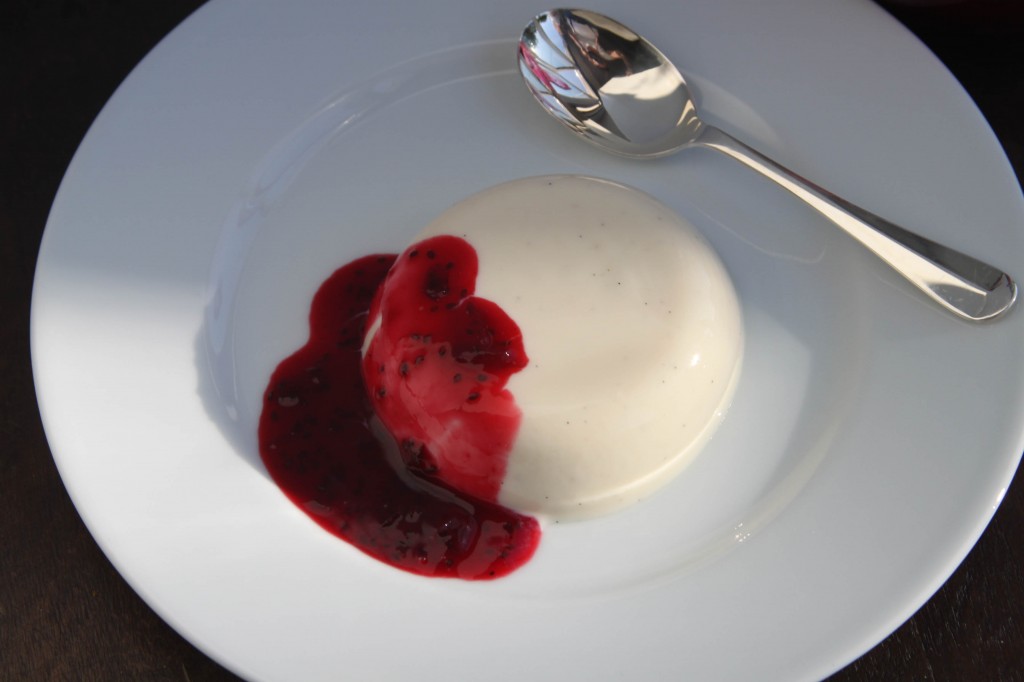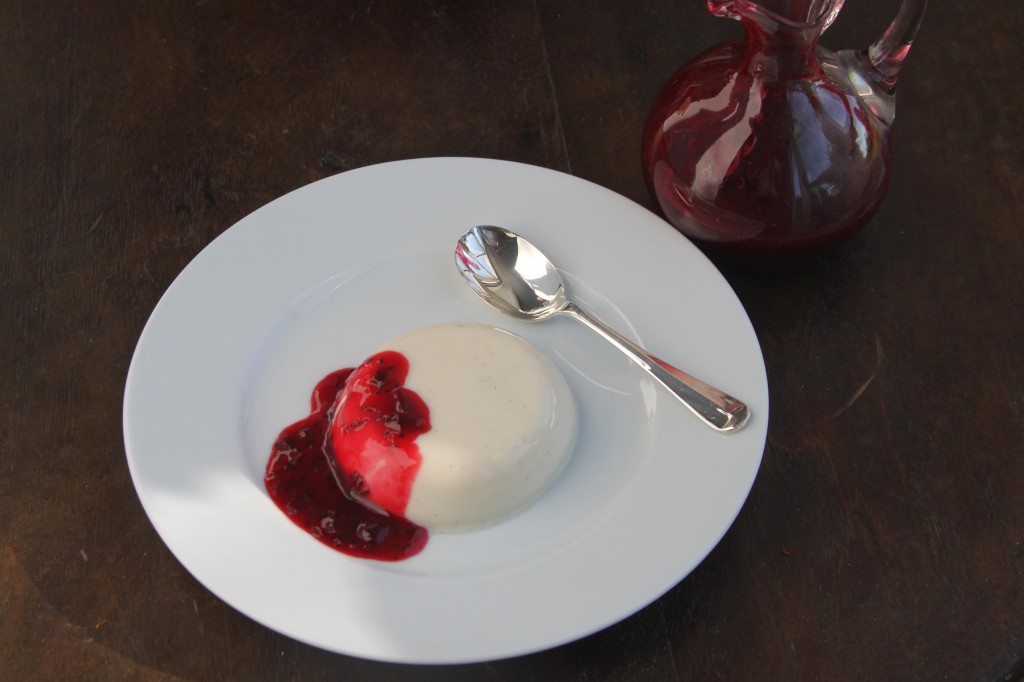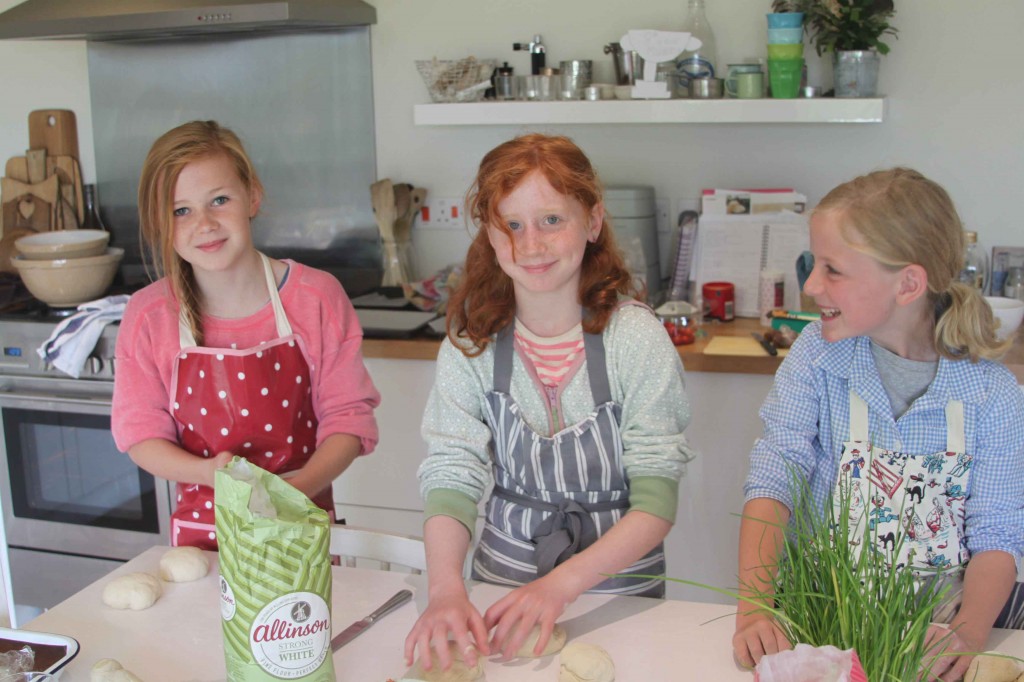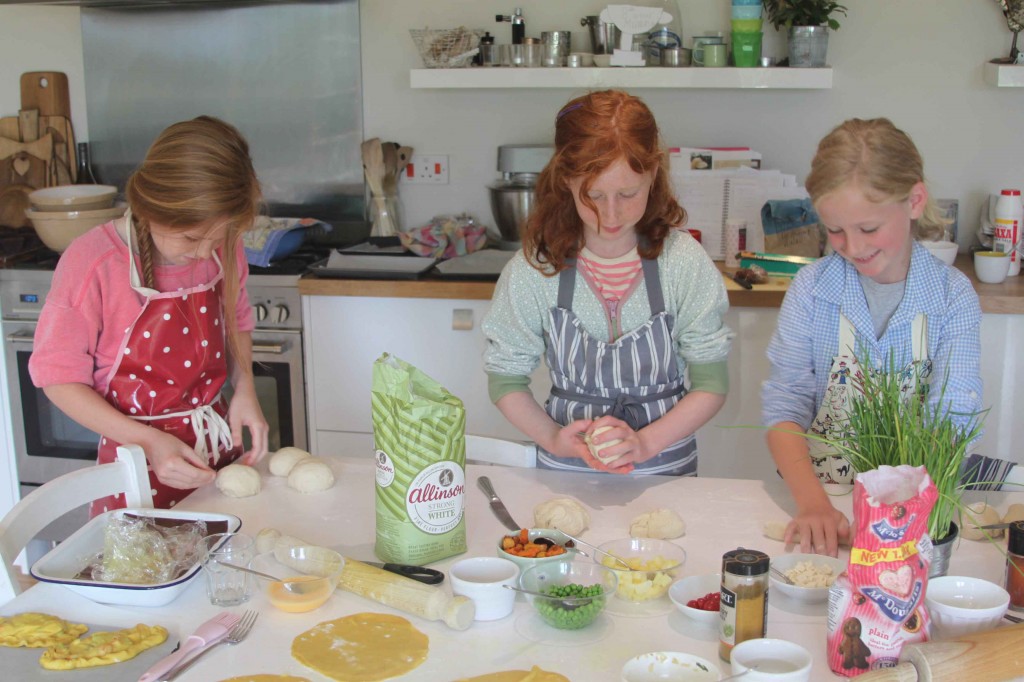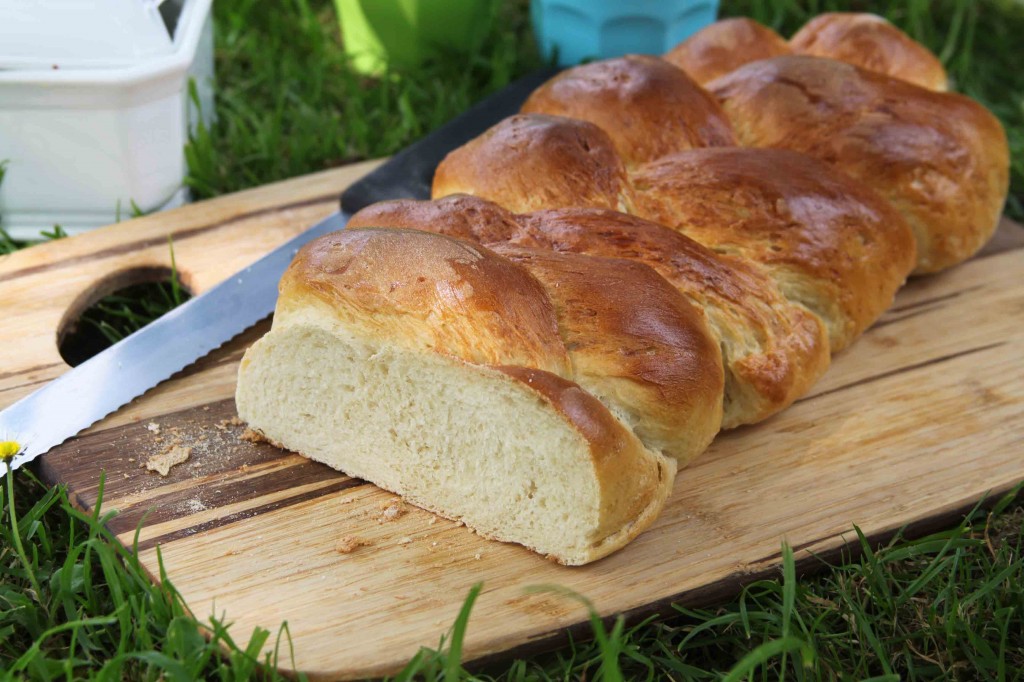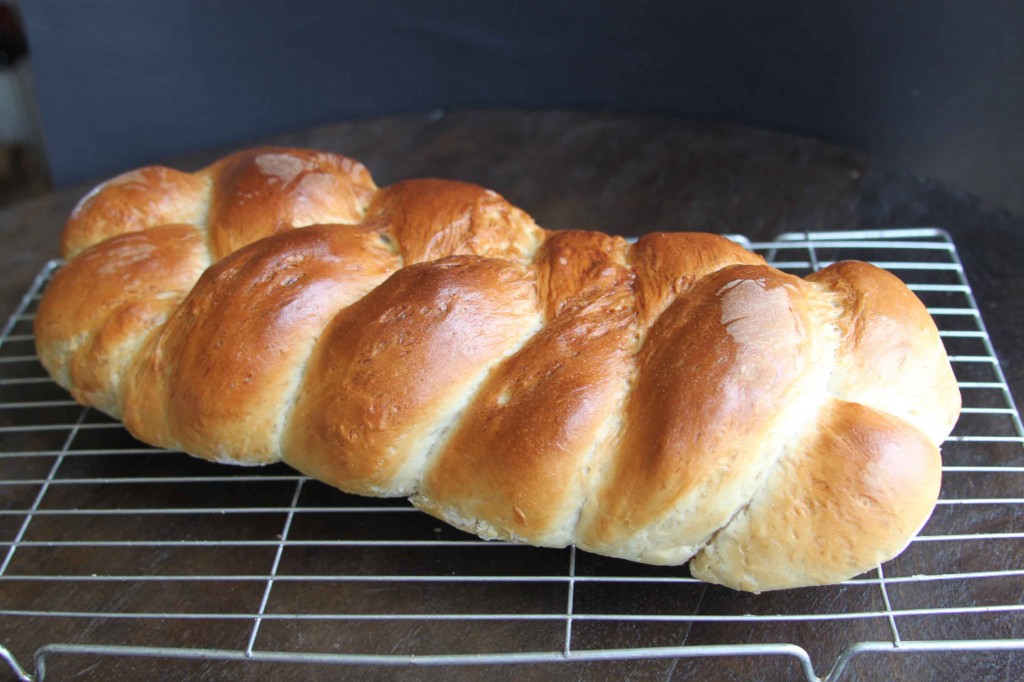I went into the larder yesterday and a pile of vegetables were gazing balefully at me. I had bought them for the weekend but we had done other things and my menu plans had gone awry. As I am going away I knew they needed to be eaten up, there is nothing worse than having to throw something away which was fine one minute and gone off the next. So, courgettes, peppers, aubergine and onions all jostling for the top spot. Aubergine curry, a provencal tian, soup – lots of things crossed my mind but it is hot and I wanted a salad.
I used to make a salad like this all the time in the 90’s – I can see myself now, in the kitchen of my flat, Oasis blaring and a vat of Bulgarian Cabernet Sauvignon on stand by. It was great then and I’ve made derivations of it ever since but I wanted to jazz it up a bit. I roasted all the vegetables and made a dressing with olive oil and pomegranate molasses. The fruity tang was just the thing to bring this up to date, both sharp and fruity and along with some crushed garlic made the perfect dressing. I’m not very keen on couscous, it always seems a bit pappy and, for me anyway, still has a whiff of school semolina about it. Bulgar wheat however has bite and texture so that is what I used. Piles of fresh herbs, the mint being one of the few things the fat slugs haven’t scoffed in the garden, and some rocket completed the picture.
If I’d planned this earlier I would have made some labne, strained Greek yogurt which I could have blobbed over the salad but some garlicky regular yogurt was an excellent alternative. I had forgotten how much I adore this salad, roasted, sweet and slightly charred vegetables, the nutty bulghar, masses of verdant herbs and the lip smacking dressing. This would go down a storm with barbecued meat or fish but is substantial enough to have for lunch on its own. Truly a winner, I will be making this all summer and beyond. Back in couple of weeks!
Roasted Vegetables with Bulghar and Pomegranate Molasses
The following vegetables are what I had but use an equivalent amount of whatever you like. Should I be overwhelmed with courgettes later in the summer (if the slugs don’t eat those too) I will make this with those and perhaps throw in some feta and chives.
2 red peppers
1 aubergine
2 courgettes
3 onions
Olive oil
1 bunch parsley, chopped
1 bunch mint, chopped
2 large handfuls rocket
100g bulghar wheat
2 tablespoons extra virgin olive oil
1 tablespoon pomegranate molasses
1 clove garlic, peeled and crushed
Half a lemon
Preheat the oven to 200. Chop the vegetables into small and similar size pieces, turn in some olive oil, put onto baking sheets and cook for about 30 minutes turning occasionally until soft and just catching at the edges. Remove from the oven and leave to cool. Put the bulghar wheat into a bowl with a pinch of salt and cover with boiling water to about 1cm above, leave to soak for 15 minutes then drain. Mix the garlic, oil, pomegranate molasses and some salt and pepper to taste. In a large bowl, toss the vegetables, bulghar, herbs, rocket and dressing, stir to combine and have taste, a squeeze of lemon will probably be all you need. Serves 2 on its own or 4 as an accompaniment.

